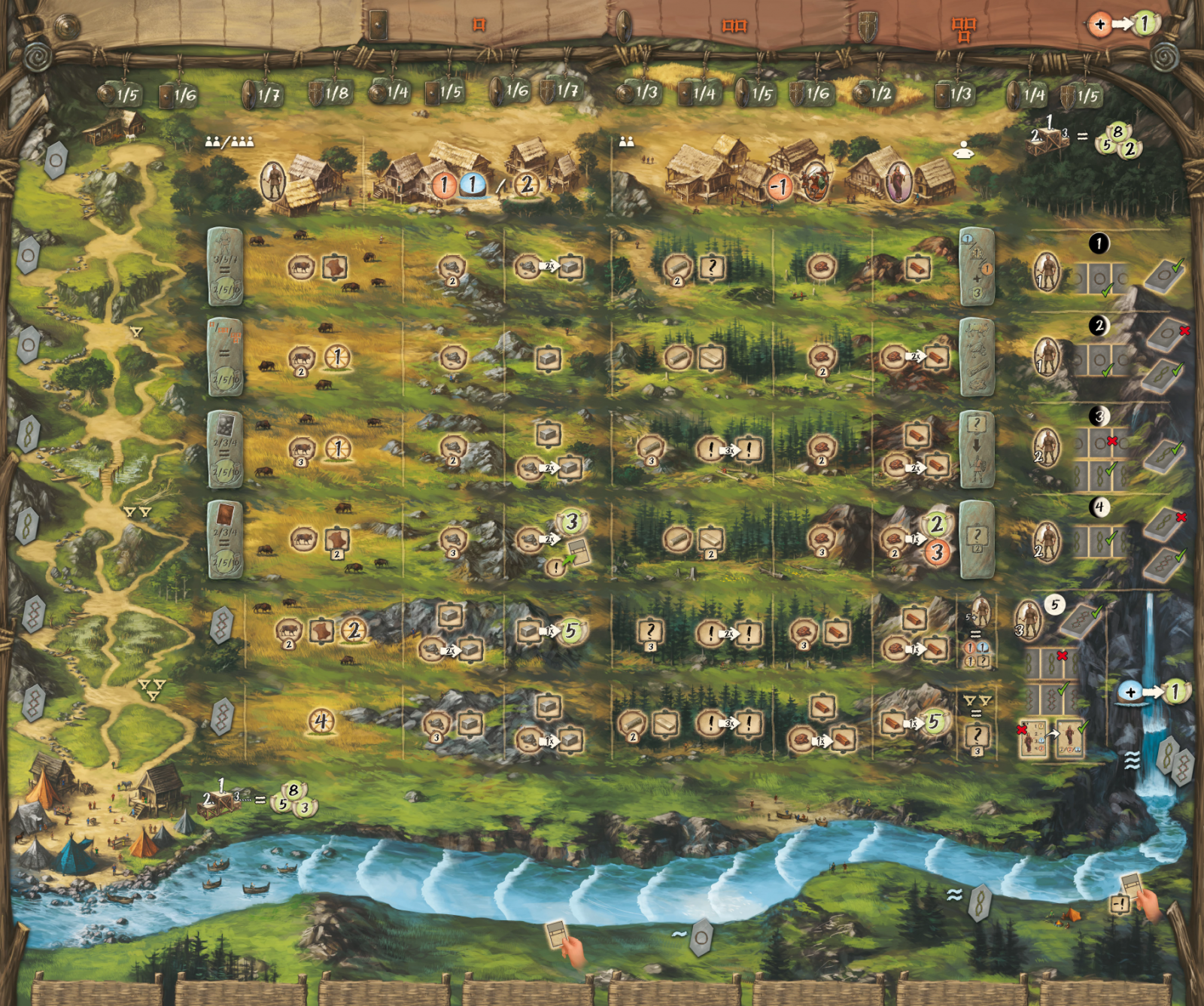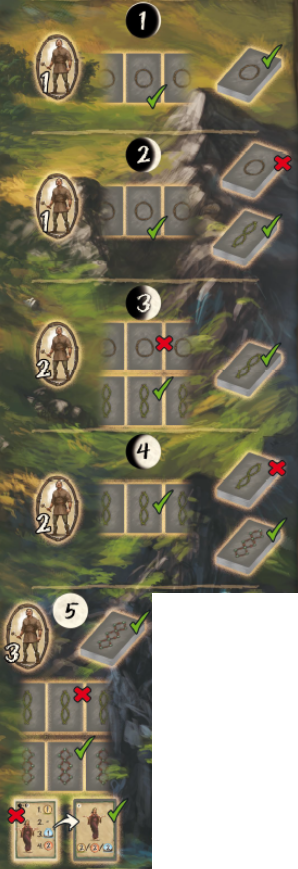New Releases
Terramara, Preview 3
This is the third preview for Terramara, in which we will show the full game board and guide you through its unexplained features. As mentioned before, the game board is beautifully illustrated by the talented Michael Menzel! Unlike most of the board games nowadays, Terramara doesn’t have a fixed game board. Instead, the land tiles you play with in a given game, are randomly selected. The configuration of tiles thus differs per game. The picture below shows one possible configuration of tiles.

Except for the bottom two rows, all resource tiles are double sided and will be flipped during the game (the 1st, 2nd, 3rd and 4th row after rounds 1, 2, 3 and 4, respectively). This symbolizes the lands getting exhausted, but huts are build close to the roads (left tile back sides). These huts provide a specific way to score victory points at the end of the game. Special action spaces appear on the right tile back sides. From the point on that your second cart reaches the crossroads of the associated row, you are eligible to place a tribe member there.
Advancing your carts along the roads involves difficult choices. Each player has 2 carts and can decide for each of them where to move. To the left, being awarded with a depicted bonus or to the right, securing a way to score victory points. Alternatively, you can take the short route, ignoring some bonus tiles and scoring possibilities, but arriving at some crossroads early. This will unlock the special action spaces, as mentioned before. You can’t backtrack and do the other possible action with the same cart as well. Although, both carts may go the same way or split up at a crossing. Arriving more early at the camp site at the the river, provides more victory points as well.

To the right side of the game board, the round track is depicted. The phases of the moon bear the round numbers, which span from 1 to 5. The worker on the left side of the track lists the worker tile value that you will receive in the current round, when choosing the related action space. The card row indicates the type of cards that lay below the board in the current round. The stack indicates which cards are used to refill the card row, and when this changes. The bottom space shows the start player card and that it is flipped at the start of round 5.
We already explained one twist to the well-known worker-placement genre, defined by the way your tribe members are placed based on military strength. Another twist in Terramara is that you are allowed to place explorers (not your chief) on future land tiles. That is, land tiles in a row below the current round. You will immediately receive the (larger amount of) resources, victory points, and steps on different tracks, but there is a down side. You will only get your explorer back at the end of the round that tile is associated with.

So for example, playing an explorer in the round 2 row when the game just started, will make you lose that explorer for the next round. Since you will only get the explorer back after round 2. Playing an explorer in one of the action spaces in the row depicted above, which is the round 5 action space, will lose you the explorer for the entire game. This tile is in one of the bottom two rows of the board, associated with round 5. These won’t be flipped and will not send your explorer home, since after round 5, the game ends.
That it is for todays’ preview. In the next preview we will show you some of the cards you will be able to design and construct. These cards fuel the main output of all those resources anyways ;).
